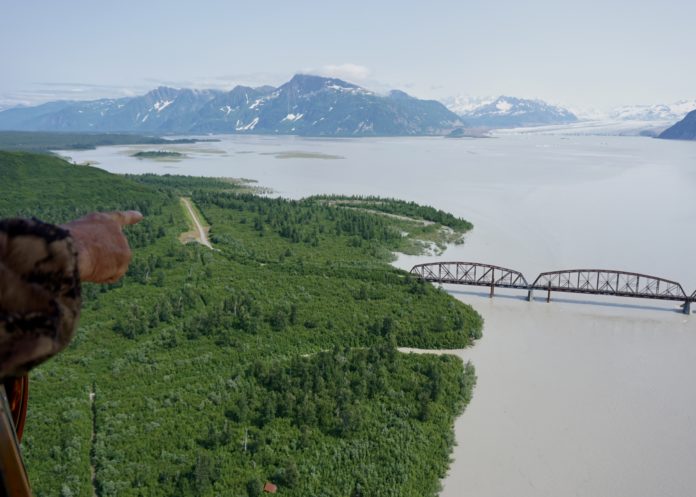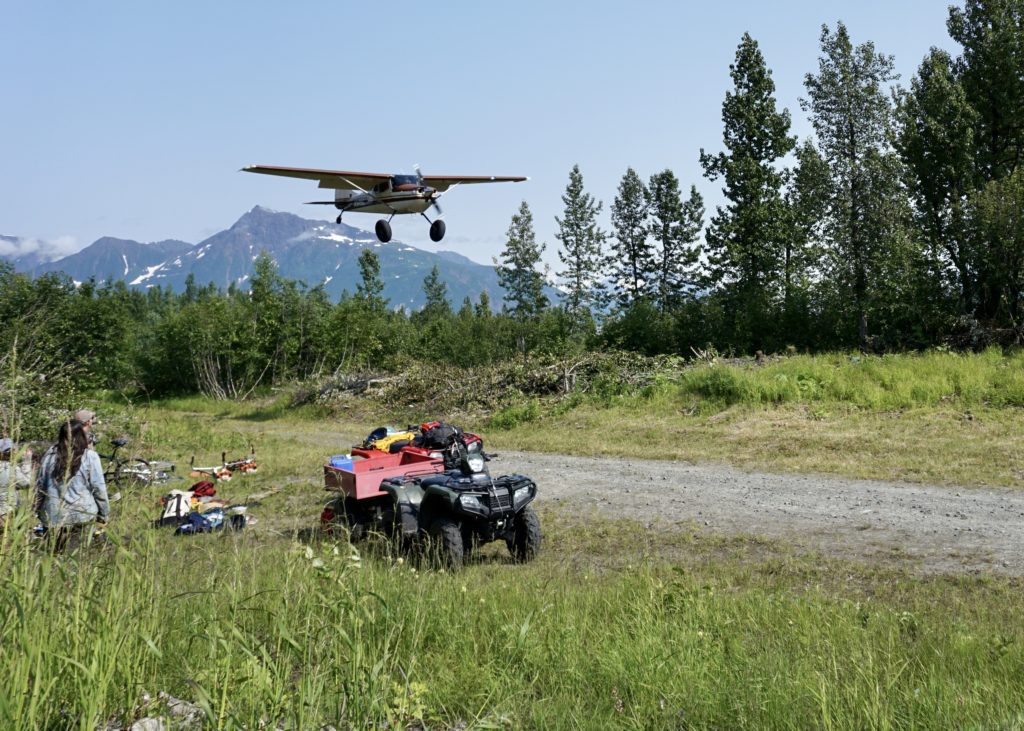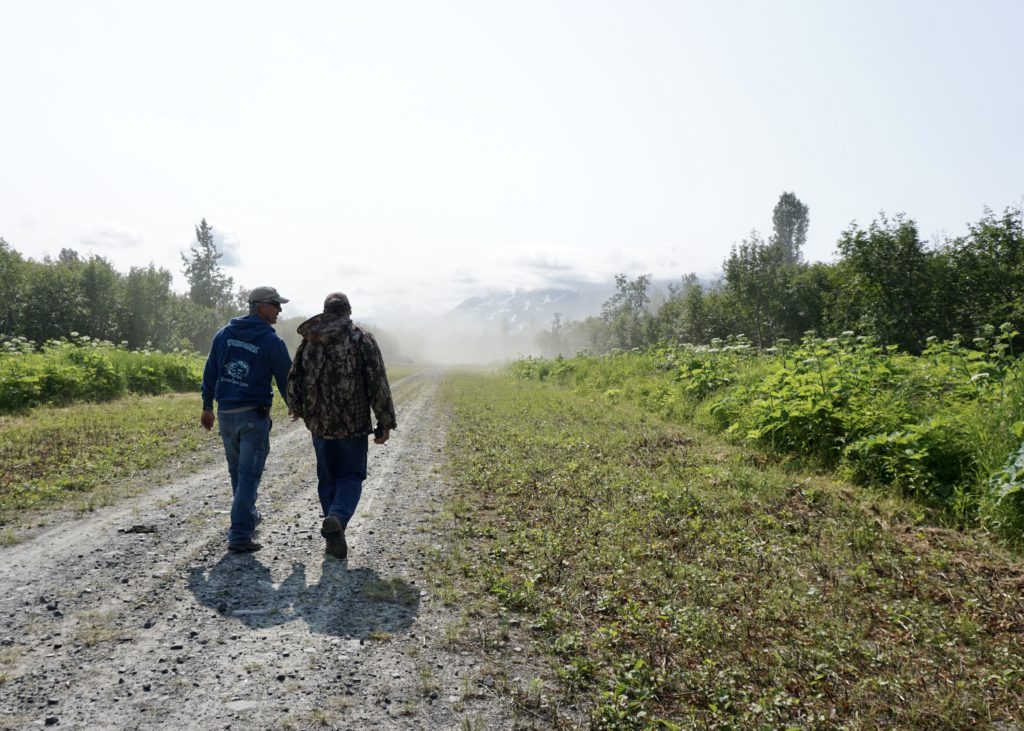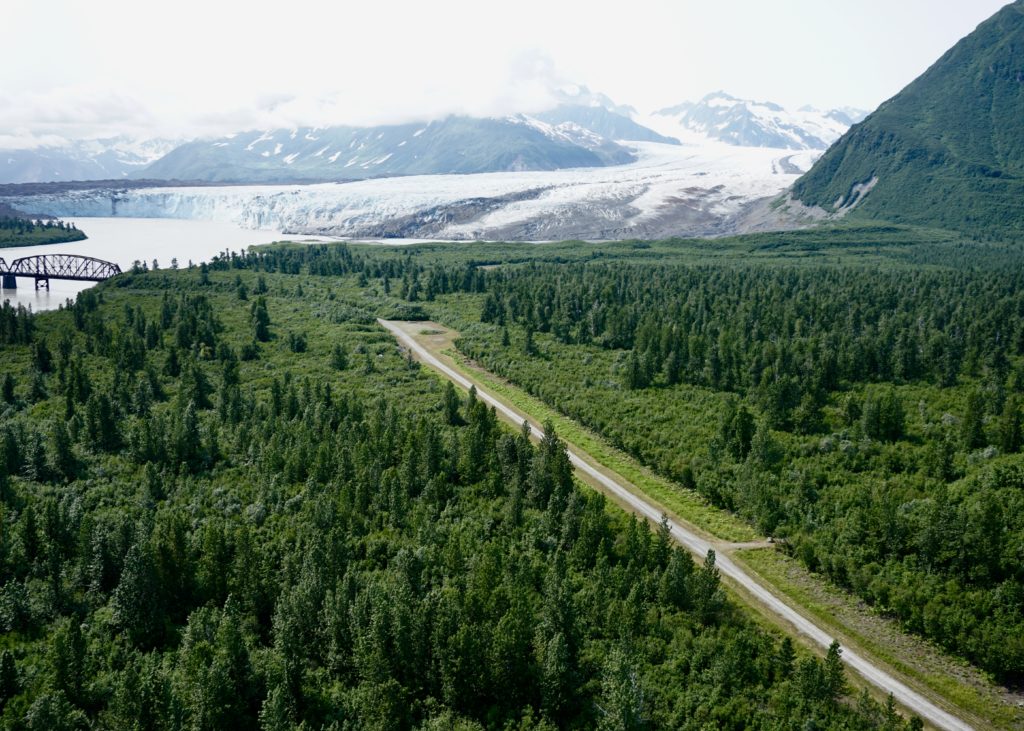
A new airstrip in the Chugach National Forest is increasing access to Childs Glacier and beyond.
Bush planes are now able to land on the far side of the Million Dollar Bridge to access the trails and infrastructure in that area, a new addition that may hold benefits for a variety of user groups including the US Forest Service (USFS), Alaska Department of Fish and Game (ADFG), Chugach Corporation, and various independent outfitters and recreators.
The Childs Glacier site features a campground area and group covered space operated by the USFS. Prior to the road washout at 36 mile bridge on the Copper River highway in 2011, the site was popular with locals and tourists wanting a unique wilderness experience.

Dave Zastrow, USFS Cordova district recreation staff officer, says that the experience of being so close to a calving glacier made the site one of the most popular in Alaska.
“We were getting 7,000 to 9,000 visitors there a year … It was very much a go-to place,” Zastrow said.
After the road washout, several boat operators were still able to ferry visitors across to the other side of the highway, but additional road damage at mile 41 some years later caused most operations to cease. Zastrow says with the possibility of road access never being restored, USFS officials are pivoting their approach to Childs Glacier to manage it as a more remote experience.
In addition to being a uniquely beautiful destination, the area holds historical and ecological importance. Million Dollar Bridge is an iconic lasting piece of the Copper River and Northwestern Railway, and was added to the National Register of Historic Places in 2000.

Further, the location is home to the ADFG Miles Lake sonar site, a critical point of entry for wild salmon entering the Copper River system. A crew of four technicians operates the site each summer to count fish passage in order to determine sustainability levels for the commercial and subsistence fisheries. Without road access, the crews and other visitors have had to rely on difficult boat crossings and sometimes cost prohibitive helicopter transport to access the site.
Troy Tirrell, a local retired commercial fisherman and recreational pilot, has been instrumental in building an airstrip that could be reliably used for the multiple users of the area. Tirrell has been acting as a volunteer coordinator for the effort on behalf of the Recreational Aviation Foundation (RAF), a nonprofit whose mission is to improve and create recreational air access throughout the nation. He says RAF had identified the site as a desirable place to create a remote air strip due to its location as a jumping off point to the interior of the pristine Wrangell Mountains.
Tirrell was able to use his local knowledge and connections to help the project come to life through a partnership with the USFS. In collaboration with RAF, Tirrell created a proposal for the airstrip and was able to receive federal grant funding through the USFS Secure Rural Schools fund.
“Having the Forest Service as a partner made it possible and safe to do this,” Tirrell said of the project.
Tirrell says the lack of any available official parameters for designing and building a bush plane airstrip in Alaska was an early challenge in the project. Tirrell says he was able to use his own experience as a veteran pilot of 30 years, as well as input from fellow pilots and guidance from RAF to complete the design.

The finished airstrip is more than 1,100 feet long with run-outs on either end, and is 15 feet wide with brush cleared. The airstrip runs along a piece of the formerly connected Copper River Highway, which offered an ideal spot for air landing, as it was already road graded and cleared from large tree growth.
A team of trailbuilders from Alaska Trails working on behalf of the USFS cleared large brush with chainsaws from the area this summer, and Tirrell himself mowed the vegetation along the sides of the runway.
During a visit to the airstrip this past week, Tirrell told The Cordova Times that the completion of the new landing strip also addresses important safety concerns. The location is a common stop for bush pilots going between the coast and upriver who need to wait out the often unpredictable weather of the Delta.
Prior to the cleared landing strip, planes would have had to land on a variety of ever-changing and unlevel sandbars. It was a busy day at the airstrip and three pilots landed aircraft within the hour.
Ridgeline Aviation, a local commercial air taxi service, dropped off a visitor to ADFG’s Miles Lake sonar followed by another pilot delivering equipment for a rafting operation.
“It’s happening!” Tirrell declared while watching a third plane touch down. “We wanted people to use it like this, that’s exactly why we did it.”
Zastrow and Tirrell have plans to expand the airstrip enough for larger beaver aircraft to safely land in the area soon. In the near future Tirrell also hopes to find a way to get heavy machinery to the site to remove obstructions, like rock piles, away from the landing zone.
Zastrow and USFS are supportive of projects that increase access to USFS lands.
“Our hope is, as this continues to be improved, that there will be service providers who can fly the general public to that site in order to be able to enjoy it,” Zastrow said.





